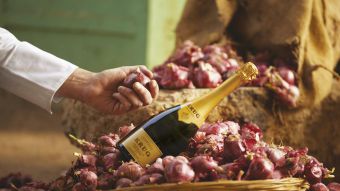Castell de Perelada, three generations committed to the Empordà
Castell de Perelada is a collection of historical and cultural monuments located in the Empordà (Catalunya) and boasts a long wine-making tradition. Its vineyards have given rise to wines of great prestige such as Finca Garbet, Cavas of long-standing such as Gran Claustro and limited editions such as the Ex Ex collections. Among the bodega’s wines and Cavas with vintages on sale in 2012, nine have obtained 90 or more Parker points and thirteen in the Peñín Guide. Tradition, family and the Mediterranean come together to produce wines and Cavas imbued with tradition, history, innovation and great diversity.
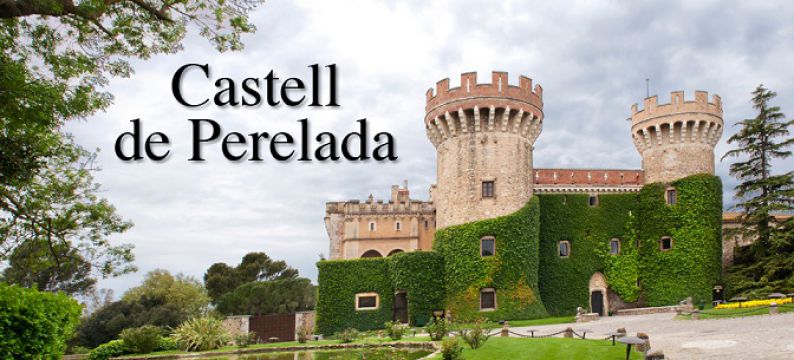
Family tradition, the winery’s emblem
It is impossible to talk about the Castell de Perelada and its winery without talking about the Suqué Mateu family. In 1923 Miguel Mateu acquired the buildings and decided to restore the vine-growing tradition of the 14th Century, when Carmelite monks used to make wine. His son-in-law, Arturo Suqué, took over in 1972 and along with his wife established the famous Castell de Perelada Festival, which is celebrating its 25th anniversary this year. It is Miquel Mateu’s grandson, Javier Suqué Mateu, who now runs the winery.
The three generations, with their great affection for the land and wine, have worked to promote the Empordà DO and to produce quality products, as Javier Suqué points out: “my family and I are very proud of the wines and Cavas that we offer. It is a balanced and complete range, capable of satisfying the most stringent of present-day requirements”.
A wine list to please everyone
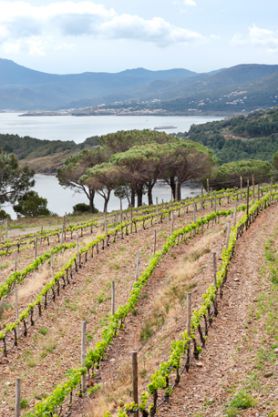 The winery presently has around 150 hectares under cultivation spread over five estates, with the most emblematic being Garbet, whose vines just about reach the sea. Malaveïna is an estate set on red clay that produces wines with great personality, such as the red bearing its name. The other three estates are La Garriga, having the oldest vine stock: Espolla, with its 50 hectares, and Pont de Molins, sandy and with a small amount of silt that gives the wine freshness and refinement.
The winery presently has around 150 hectares under cultivation spread over five estates, with the most emblematic being Garbet, whose vines just about reach the sea. Malaveïna is an estate set on red clay that produces wines with great personality, such as the red bearing its name. The other three estates are La Garriga, having the oldest vine stock: Espolla, with its 50 hectares, and Pont de Molins, sandy and with a small amount of silt that gives the wine freshness and refinement.
Among the Castillo de Peralada wine range we find young wines, and single varietals showing a noticeable difference between wines produced using the same variety but from different terrains and climatic conditions. In addition, we come across the winery’s flagship products such as Finca Garbet and Gran Claustro. The latter is made from a coupage of the best from each estate, with the aim being to produce a wine that brings together the best of the Empordà.
The winery also dedicates part of its resources to research and this has given rise to the Ex Ex (Exceptional Experiences) collection, which are wines produced in small quantities by the oenologists, enabling them to study factors such as grape ripeness, type of terrain...
A Cava with history
An example of the tradition that lies behind the Castillo de Perelada winery takes us back to its beginnings, in the year 1959. The American President Eisenhower was visiting Spain and Miguel Mateu had been entrusted with selecting a Cava for the reception banquet. He chose a Cava from his own reservas, which had been crafted by hand and aged in the convent cellars where the Carmelite monks had once made wine. It was a resounding success and the first time that Gran Claustro saw the light of day, still continuing to be produced nowadays as one of the winery’s star Cavas.
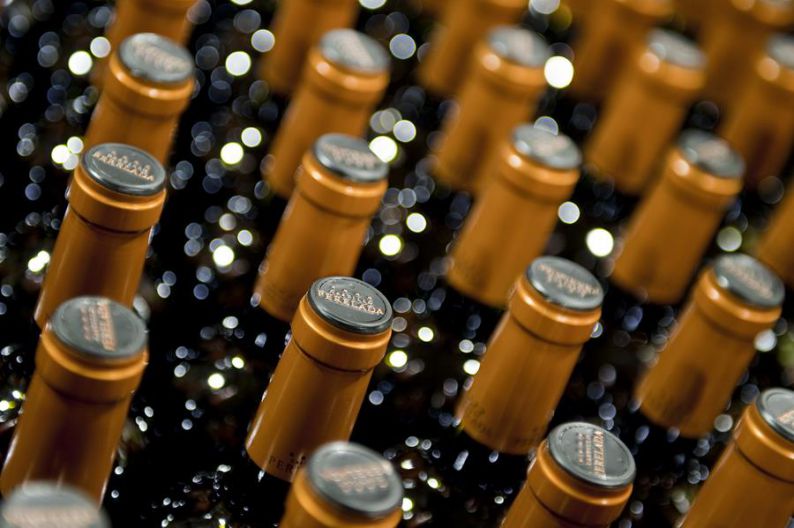
Music, casino, spa and culture
The Castell de Perelada monuments include the famous castle, and also a gothic church and the Carmelite convent. Culture and history have long been one of the family’s interests. Miquel Mateu was an art enthusiast and collector, and this heritage can be viewed in three collections, with an example being the 2,500 items belonging to the glass museum. The complex also houses a wine museum and the castle’s library, with a collection of 5,000 different editions of Don Quijote.
A passion for culture has been inherited by his successors and this is most clearly illustrated by the Castell de Perelada Festival, which has been celebrated annually since 1986. Moreover, included on the site are the Hotel Perelada, the golf club and the Wine Spa, which was opened in 2001 and offers ampelotherapy treatments, based on grape and wine derivatives.
Garbet: emblematic vineyard and wine
 If there is a jewel in the crown among the Castillo de Perelada estates it is Garbet, the essence of the Mediterranean in all its splendour: vineyards with sea views and an exclusive wine with personality.
If there is a jewel in the crown among the Castillo de Perelada estates it is Garbet, the essence of the Mediterranean in all its splendour: vineyards with sea views and an exclusive wine with personality.
To the north of Cap de Creus extends an area of 12 hectares with 38,000 grapevines of five different varieties. This is Garbet, whose grapes give rise to the wine of the same name.
The one thing that characterises this vineyard is its proximity to the sea, which makes it unique and emblematic, with the lowest part lying at 30 metres above sea level and the highest at 120 metres. The sea acts as a natural heat regulator, as the oenologist and technical director at Castillo de Perelada, Delfí Sanahuja, explains: “the sea ensures that the vines do not suffer extreme temperatures, and makes it easier for the grapes to ripen more slowly and continuously. The sun’s reflection off the sea lights up the vineyard and so it becomes more Mediterranean.” The slate soil is another natural temperature regulator that retains the heat in the ground and filters more water through.
“An emblematic vineyard with value added” is how Delfí Sanahuja decribes it, who adds that nature’s four elements are represented there: water, through the sea, rain and trickle irrigation; earth, with the slate soil; wind, due to the Tramontana that favours the vines because it dries the moisture quickly and keeps away diseases such as fungal infections, but which at times can see buds removed when flocks of birds are blown in, and fire, represented by the sun.
From pine woods to grapevines with sea views
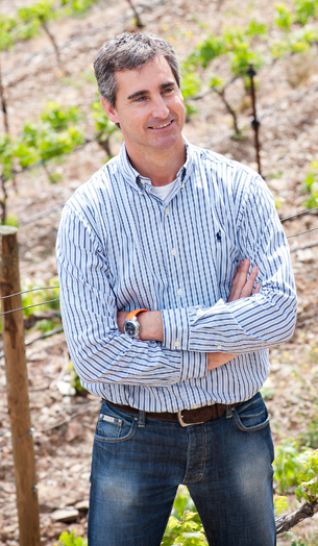 Delfí Sanahuja, oenologist of Castell de PereladaGarbet’s history started in 1996 when the land began to be prepared for cultivation, but some years before that, Javier Suqué, the founder’s grandson, had taken control of the wine business and put forward the idea of making Garbet an emblematic vineyard. In 1997 he established the first plantation, which was developed in four phases over the following years. The land presently has plantations of Cabernet Sauvignon, Merlot, Syrah, Cabernet Franc and Garnacha Negra.
Delfí Sanahuja, oenologist of Castell de PereladaGarbet’s history started in 1996 when the land began to be prepared for cultivation, but some years before that, Javier Suqué, the founder’s grandson, had taken control of the wine business and put forward the idea of making Garbet an emblematic vineyard. In 1997 he established the first plantation, which was developed in four phases over the following years. The land presently has plantations of Cabernet Sauvignon, Merlot, Syrah, Cabernet Franc and Garnacha Negra.
Adapting the land was a long and costly process, and detailed studies were made of the slopes, the structure, and a proper geological study was carried out to avoid erosion... And finally it turned into a fascinating vineyard that seems to climb up the mountain sides from the coastline.
As Sanahuja the oenologist declares: “it’s not up to us to say it, but I believe this is one of the most beautiful vineyards in Spain”.
Bringing craftsmanship and technology together
Garbet combines crafting at its best and hands-on attention with the latest in technology. Three weather stations facing different directions send information via modem about the wind, humidity, temperature and light... Moreover, both Garbet and the other four Castillo de Perelada estates are connected to a satellite which sends weather forecasts that have a 92% reliability rate. All so that the vineyard can be meticulously cared for, monitored and tended in minute detail.
Finca Garbet: the essence of the Mediterranean in a bottle
From such a special vineyard comes an emblematic wine which the winery’s technical director calls “the selection of the selection”, since every wine-making process is carried out choosing only the best from the vineyard, a manual selection of the grapes, the best barrels... In the end, between 2,000 and 4,000 bottles are released onto the market, yet not every year, as was the case in 2002: “if it isn’t very good it doesn’t go out”, explains Sanahuja. It is primarily made from the Syrah grape variety and the percentage varies depending on the vintage; the Finca Garbet 2005 is made using 100% this variety.
Finca Garbet is a pleasant wine, silky on the palate, enveloping, long, showing warmth and depth, as described by the oenologist Delfí Sanahuja, who adds that “its aroma reminds us of spring, walking among the vines, and it brings to mind aromatic herbs, red fruits, minerality and heat from the slate”.
Website: http://www.perelada.com/





